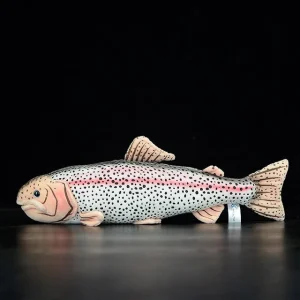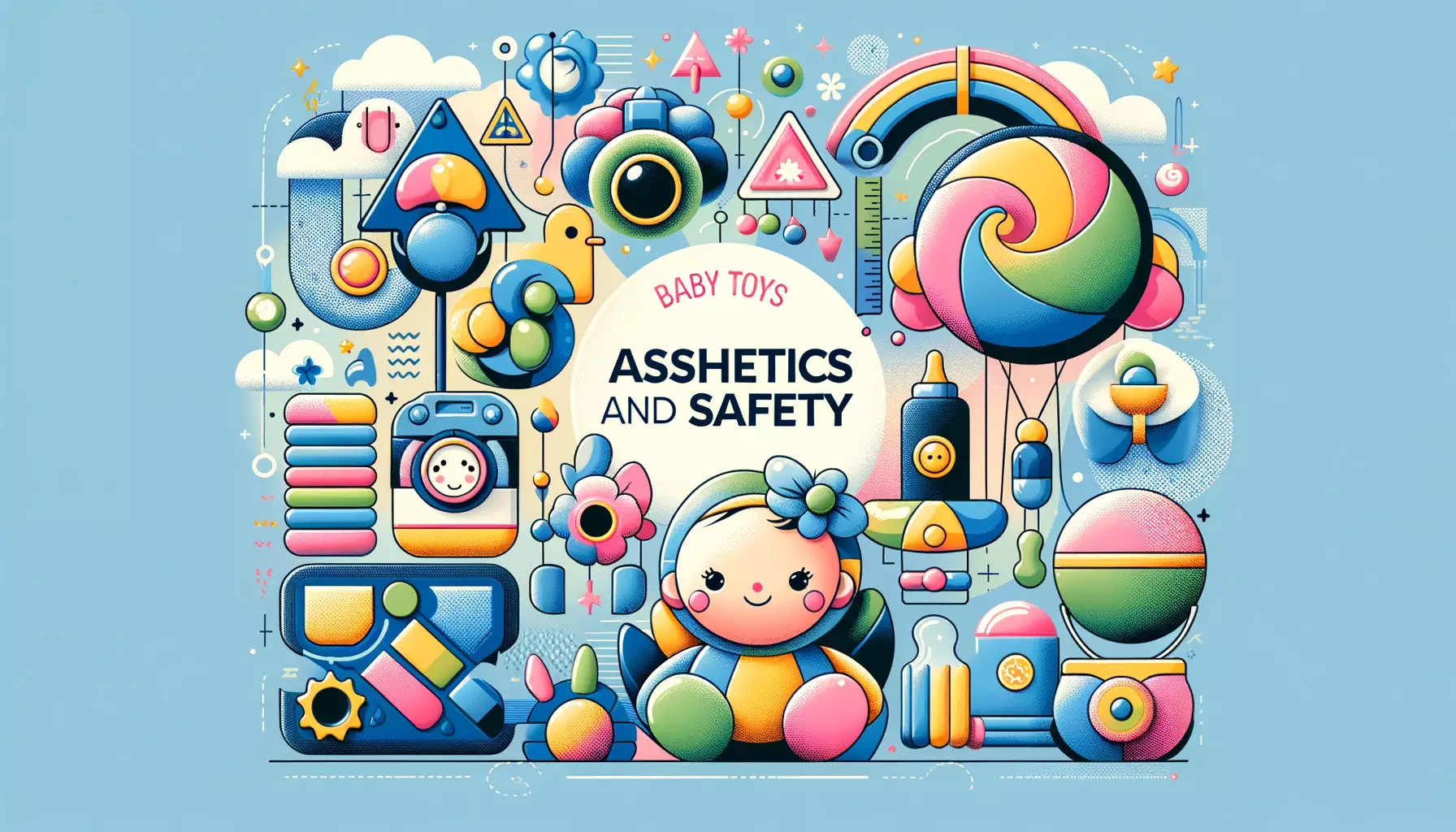Ever thought about the fascinating dance between style and safety when it comes to designing baby toys? The look of a toy isn’t just about aesthetics; it plays a crucial role in a child’s growth and happiness. Delving into the realm where beauty meets protection in baby toy design reveals a realm where innovation ensures our little ones’ well-being.
In this exploration, we’ll uncover the secrets behind aesthetics and safety in baby toy design. Curious to know how these elements shape your child’s playtime? Let’s dive in!
Get ready to discover the magic where creativity and security come together to create unforgettable experiences for your little bundle of joy.
Ready to unlock the secrets of safe and stylish baby toy design? Let’s embark on this enlightening journey together!
Key Takeaways
- User research informs engaging and safe designs for baby toys.
- Incorporating age-appropriate aesthetics aids in child development.
- Material safety standards ensure durability and non-toxicity.
- High-quality, durable materials are essential for long-lasting safety.
Safety Standards Compliance
Wondering why compliance with safety standards like ASTM F963 is so important for the safety of baby toys?
As a Toy Manufacturer, meeting these standards is crucial to ensure the well-being of the little ones using your products. By adhering to strict safety regulations like ASTM F963, you not only show your dedication to creating safe toys but also build trust with consumers.
Following global safety standards such as EN 71 and ISO 8124 demonstrates your commitment to providing safe and reliable baby toys on an international scale. Certification bodies and testing labs play a vital role in confirming compliance, ensuring that your toys meet all safety requirements.
Stay up to date on any changes in safety regulations to uphold the highest safety standards in your baby toy designs.
User-Centric Design Approach
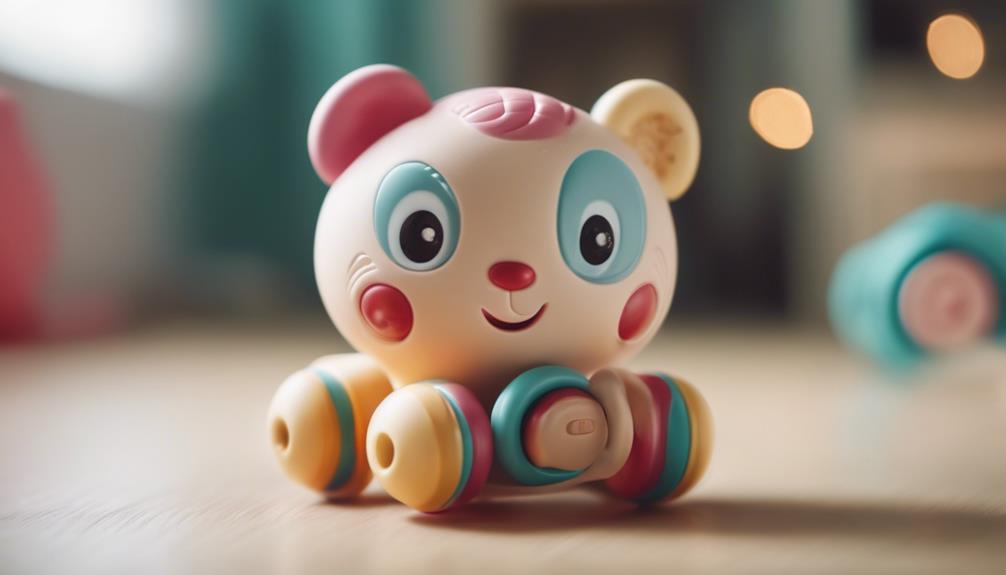
When crafting baby toys, it’s essential to embrace a user-centric approach. Understanding the needs, preferences, and behaviors of the target audience, like infants and toddlers, is key. User research, including surveys, interviews, and observations, helps gather insights into children’s age, gender, culture, and interests. By observing how babies engage with toys, designers can pinpoint potential safety risks and usability issues. Developing toys that aren’t only engaging and developmentally beneficial but also safe for young users is paramount.
User-Centric Design
In the realm of baby toy design, a user-centric approach is paramount. This involves focusing on the child’s developmental needs and creating toys that foster growth and learning.
👶 Safety is a non-negotiable aspect, mandating non-toxic, durable materials.
Designing for Development
Designing for development hinges on these key factors:
- Safety: Selecting non-toxic, non-flammable, non-allergenic materials is vital.
- User Research: Understanding the target audience’s needs and behaviors is crucial for effective design.
- Design Principles: Applying simplicity, durability, and ergonomic design enhances usability and aesthetics.
- Testing: Prototyping and user testing ensure alignment with developmental milestones.
- Accessibility: Age-appropriate, appealing designs promote a positive learning and play experience.
| Design Principle | Description |
|---|---|
| Simplicity | Avoiding complex designs to cater to young minds. |
| Durability | Choosing robust materials for longevity and safety. |
| Ergonomic Design | Tailoring designs to fit children’s physical capabilities. |
Safety Considerations
Safety is a top priority in baby toy design, requiring attention to:
- Standards Compliance: Meeting safety regulations is essential.
- User Research: Gaining deep insights into the target audience’s specific needs.
- Design Principles: Principles like affordances and sensory feedback are key.
- Material Selection: Opting for safe, sustainable materials.
Aesthetically Pleasing Colors
The aesthetic allure of baby toys is pivotal, achieved through:
- Bright Colors: Stimulating sensory development and aiding in shape and pattern recognition.
- Pastel Tones: Creating a soothing, comforting environment.
- Color Variety: Encouraging exploration and introducing diverse visual stimuli.
Texture and Sensory Considerations
Texture and sensory elements in baby toys should:
- Vary in Texture: Offer diverse tactile sensations to stimulate touch.
- Ensure Safety: Be suitable and safe for the intended age group.
- Sensory Feature Placement: Be strategically placed to avoid hazards.
Shape and Size Appropriateness
Toys must be tailored to the child’s developmental stage:
- Appropriate Size and Shape: Avoid small parts; design for easy handling.
- Ergonomics: Ensure comfort and adaptability to the child’s play environment.
Useful Links:
Grandeuria – Cognitive Development Plush Toys
Grandeuria – Toy Shapes Learning Imagination
Grandeuria – Engaging Plush Toys for Babies
Applying design principles such as simplicity, sensory feedback, and durability enhances safety and aesthetics. By prioritizing a user-centric design, baby toys can meet safety standards and positively contribute to child development.
Aesthetic Appeal Consideration
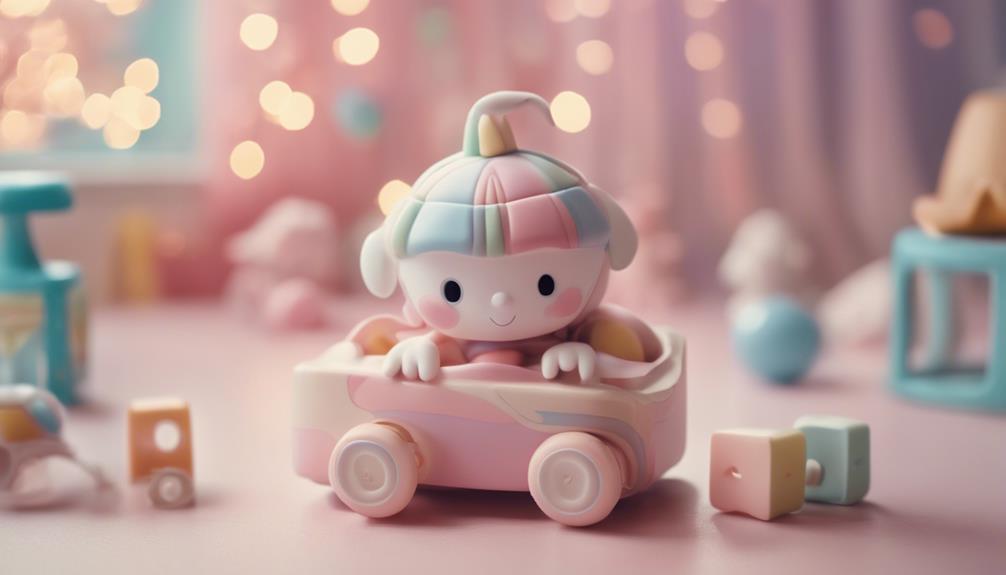
When designing baby toys to captivate infants’ visual interest and foster creativity, it’s essential to consider incorporating bright colors, high contrasts, and interesting textures. By focusing on the aesthetic appeal of children’s toys, remember the significance of creating visually engaging designs that also promote safety and developmental benefits.
To achieve this balance effectively, consider the following:
- Color Psychology: Utilize colors that evoke positive emotions and stimulate cognitive development.
- Age-Appropriate Design: Ensure the aesthetics match the child’s developmental stage.
- Sensory Development: Include textures that encourage tactile exploration and sensory stimulation.
- Imaginative Play: Design toys that spark imagination and creativity, fostering interactive and engaging play experiences for infants.
Material Selection Importance
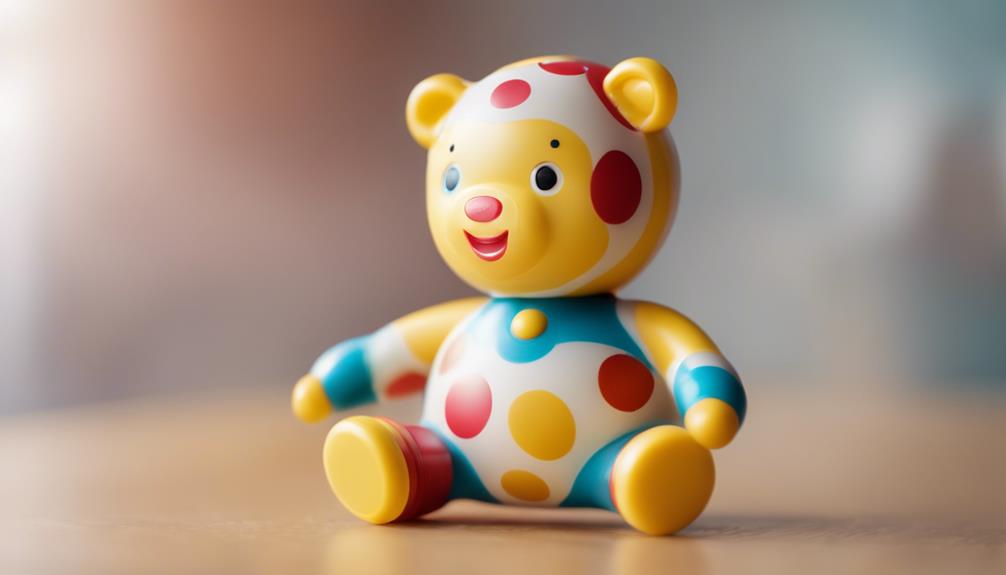
When designing baby toys, selecting materials is vital to meet safety standards.
Ensuring durability is crucial for toys that will be handled by babies.
Addressing toxicity concerns through material choices is a key aspect of creating safe baby products.
Material Safety Standards
When designing baby toys, it’s crucial to prioritize the safety of infants by choosing materials that meet stringent standards. Toy designers must follow guidelines such as ASTM F to ensure that the materials used are safe for babies.
Here are some essential considerations regarding material safety standards:
- Opt for non-toxic, non-flammable, and non-allergenic materials.
- Avoid harmful substances like lead, mercury, and phthalates.
- Choose materials based on performance, durability, and suitability.
- Prioritize sustainability by selecting renewable, recyclable, or biodegradable options.
Durability for Babies
When it comes to designing baby toys, durability is paramount. Selecting high-quality materials that can withstand rough handling is essential to ensure long-lasting safety for infants. Opt for materials like BPA-free plastics or soft, non-toxic silicone to enhance durability and safety in toy design.
These materials should be able to endure repeated use, washing, and chewing without breaking or posing a choking hazard. Resilience to wear and tear is crucial to creating toys that remain safe and functional over time.
Toxicity Concerns Addressed
Ensuring the safety of infants is paramount, requiring careful consideration of toxicity concerns when selecting materials for baby toy production.
Prioritize non-toxic options to safeguard babies from harmful substances like lead, mercury, and phthalates. Opting for child-safe materials is essential to mitigate potential health risks and protect infants’ well-being.
Choose eco-friendly materials to resonate with environmentally-conscious consumers and promote sustainability, aligning with the values of modern parents. Remember to assess material performance and suitability for baby toys to ensure durability and safety, preventing choking hazards and other potential dangers.
Prototype Testing Procedures

Prototype Testing Procedures: Ensuring Toy Safety and Appeal
In the realm of toy design, the testing of prototypes stands as a pivotal step in assessing safety, functionality, and allure. These meticulous procedures are designed to guarantee that the toy is secure for children by identifying and resolving any potential hazards or design imperfections.
Formative and summative testing phases involve gathering insights from actual users like children, parents, educators, or guardians to align with safety standards and regulations. Skilled evaluators are also enlisted to conduct thorough assessments and confirm adherence to safety protocols.
Packaging Design Evaluation
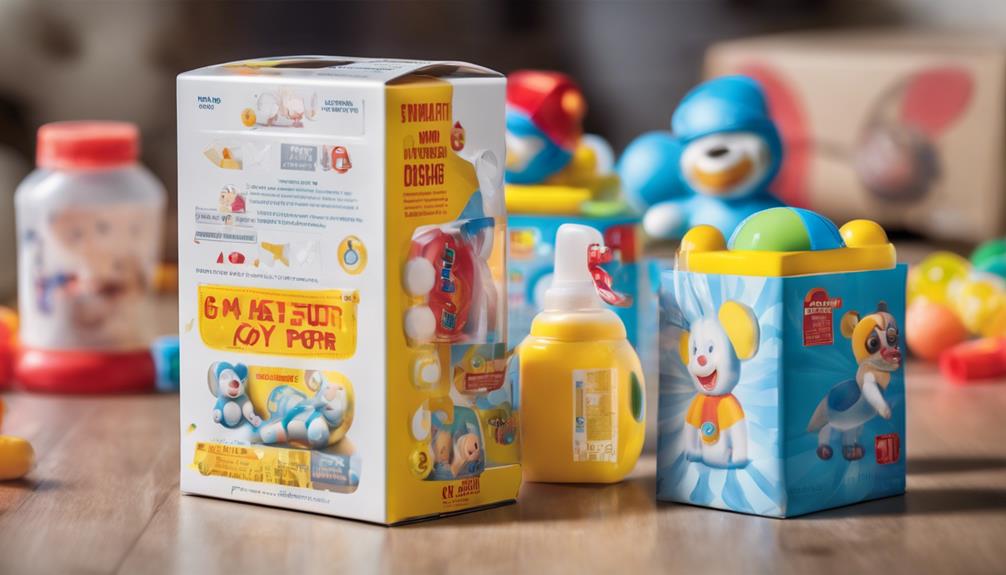
Prototype testing has established a strong foundation for ensuring the safety and appeal of baby toys. Now, turning our attention to packaging design evaluation is crucial for effectively presenting these products to consumers.
- To promote age-appropriate play, the packaging should clearly indicate the recommended age group for the toy.
- Safety warnings and instructions must be prominently displayed on the packaging to guide parents on proper usage.
- Packaging materials should be durable and non-toxic to prevent any potential harm to children.
- Eye-catching and informative packaging designs can enhance the overall appeal and marketability of baby toys.
Additional Factors to Consider
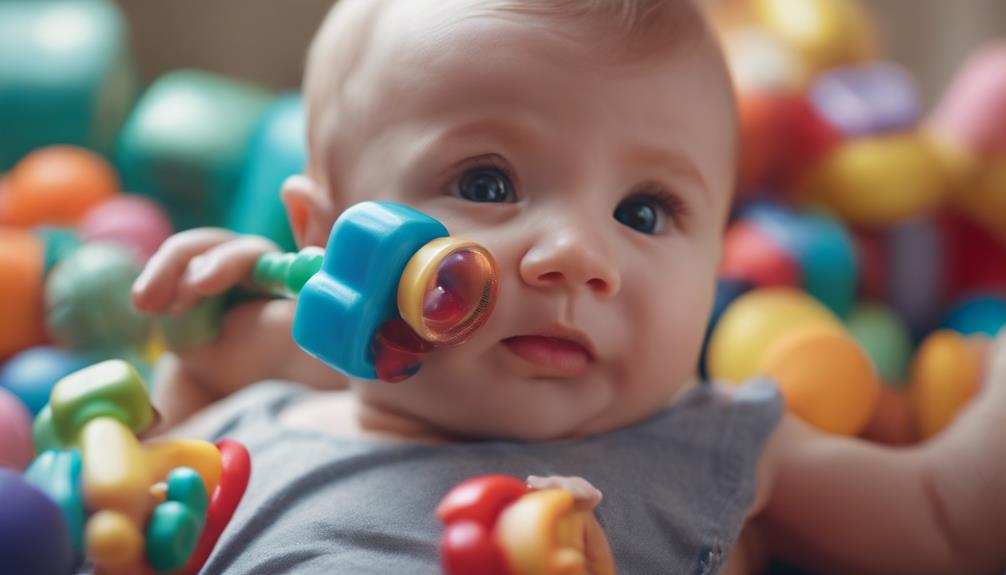
When designing baby toys, it’s essential to focus on incorporating sensory elements such as textures, sounds, and lights to effectively engage infants in play and exploration. Including a variety of textures in toys can help stimulate a child’s development by enhancing their sense of touch and encouraging sensory exploration.
To further support a child’s development, opt for a color palette that enhances visual acuity, incorporating contrasting colors to capture their attention. Ensure that the size and shape of toys are appropriate to avoid choking hazards for babies. Choosing soft and non-toxic materials is crucial to prioritize infant safety during playtime.
Frequently Asked Questions
What Are the Safety Considerations for Children’s Toys?
When choosing children’s toys, consider safety first. Avoid sharp edges, small parts that could cause choking, and toxic materials like lead. Prioritize non-toxic, non-flammable, and non-allergenic materials for peace of mind.
What Is the Most Common Safety Hazard for Infant Toys?
When it comes to infant toys, the most common safety hazard is choking on small, detachable parts. These tiny components pose a significant risk if they can be easily removed and swallowed by curious little ones.
What Makes Baby Toys Safe?
To keep baby toys safe, ensure they meet rigorous safety standards: non-toxic materials, secure construction, and age-appropriate design. Regular testing by reputable labs and avoiding small parts or hazards like sharp edges are key.
What to Consider When Designing a Toy?
When designing a toy, consider age-appropriate elements for safety and usability. Choose non-toxic, durable materials. Incorporate engaging features for imagination. Ensure compliance with safety standards. Test prototypes for feedback. Your design should prioritize safety, engagement, and compliance.
Conclusion
As you wrap up the design process for baby toys, remember that safety and aesthetics go hand in hand like a harmonious melody in a symphony. By ensuring compliance with safety standards and incorporating visually appealing designs, you can create toys that spark joy and curiosity in children.
Keep experimenting, testing, and refining your designs to create toys that not only look beautiful but also enhance a child’s development and play experience. Your efforts will surely bloom like a vibrant garden in a child’s imagination.


